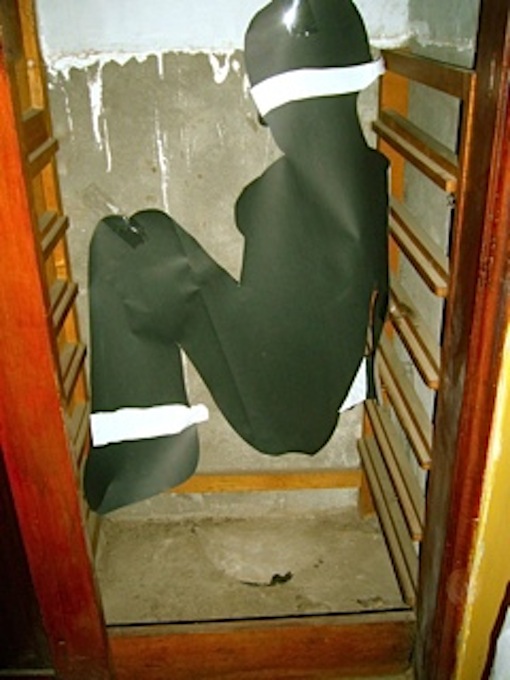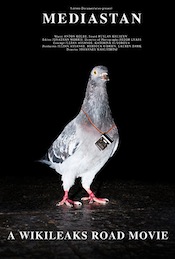Dónde Están? Where are the Disappeared?
Dónde están? Where are they? They still don’t know. “Los desaparecidos”. “The disappeared.” They want to know. Forty years is a long time. The Moneda, the presidential palace, bombed on 9/11/73. President Allende, the first socialist president of Chile, dead on 9/11/73.
Nixon and Kissinger danced a jig together and breathed a sigh of relief. They couldn’t have another Cuba on their hands. January ’59 seemed like yesterday. And, Che Guevara had been dead only 6 years. How audacious of Chile: voting in a socialist president, nationalizing the copper mines, giving land to the poor, free milk to children.
Enter General Augusto Pinochet and the DINA (Dirección de Inteligencia Nacional-secret police) with more than a little help from the CIA. “La dictadura” was 1973-1990. Congress dissolved, political parties and unions banned, constitution rewritten.
People started disappearing. Men, women and children. Babies taken from murdered parents and given to the military families to raise.
Pinochet wasn’t just suppressing the Left but rather exterminating. A state of siege begun.
Decrees (“los bandos”), torture, DINA, silence, curfews, shootings, murder, disappearances, fear, violations, more torture, more decrees, more silence and finally obedience of the terrorized.
Dónde están?
I was swept up in the 40th anniversary commemorative march on 9/8/13. I flew a total of 14 hours to this long splinter of a country tucked between the mighty Pacific and the mightier Andes. Land of volcanoes and earthquakes and Pablo Neruda. Land of deserts and icebergs and Manuel Rodríguez.
I was with 20 other activists mainly from the USA, one from Venezuela, two from Nicaragua. We were there to witness past and present Chilean history: the houses of torture, now houses of memory, the history of the dictadura. There were 60,000 in the streets and at least one helicopter overhead to watch out for our welfare. We marched in solidarity with the “Agrupación de Familiares de Ejecutados Politicos-Chile”, an organization representing the families of Chile’s disappeared, detained and executed.
Dónde están?
Our coordinators said we would be able to avoid the inevitable tear gas, water cannons and police clash by veering off at the end of the march and not concluding at the General Cemetery. They were right.
Although the press was full of breathtaking action photos of tanks, carabineros (uniformed police), flaming bottles, hurled rocks, the march was a peaceful slow walk with banners and signs, chanting and songs, from Los Héroes plaza in central Santiago past the Moneda, to the General Cemetery about 3 miles away. The many street dogs wove in and out of the marchers panting in the sun.
Patio 29, General Cemetery. dumping ground of the executed.
***
We had had a guided tour of the General Cemetery the day prior. President Allende’s impressive tomb was bedecked with bouquets of flowers; Victor Jara, the Chilean musician who was tortured and murdered, lies in a crypt high in a wall. There is a ladder leading up to it so people can leave their offerings. We laid flowers at the grave of Orlando Letelier, one of Allende’s former ministers who was killed in a car bombing in Washington DC in l976 with his aide, Ronni Moffitt.
The tentacles of the DINA.
Patio 29 in the cemetery is a special place. This is the area, a “potter’s field”, where bodies of the detained, tortured and assassinated were dumped. Sometimes 2-3 to a grave. Pinochet said that was an “economical” use of space. Their iron crosses, now rusted, are inscribed “NN” for “no nombre.” It is now a national monument. After the dictadura ended remains were removed and identified, as best as possible, with DNA analysis. Some remains are still in question.
***
Dónde están?
José Ramón Ascencio Subiabre was mine. We made our acquaintance on 9/8/13, on that spring day with clear skies. He was mine and everyone’s.
I had marched and José Ramón Ascencio Subiabre had marched with me. In spirit. He is nowhere to be found. He would have been 68 this year.
José was the face on my placard. The human rights groups had all carried placards. A sea of faces and names of the disappeared. Los desaparecidos.
I looked at José and José seemed to peer back at me. Young, intense and handsome. He had been 30 years old, married, an artisan.
And, a member of the Communist party.
He was doomed.
They came for him at his job in the waning of the day. In a white Fiat and a yellow Chevy truck, 6 members of the DINA, the fearsome secret police arrived. It was just 4 days after Christmas ’75. A hot summer day, no doubt, in Santiago, Chile. Already two years into La Dictadura.
The infamous Villa Grimaldi on the outskirts of Santiago was his next stop. Eye witness reports say he was “savagely tortured” and placed in “the tower” in a cell 70 cms wide by 2 meters tall with several others. Few survived the “Tower”. Jose was never seen again. He became a desaparecido. (www.memoriaviva.com)
Representation of bound and blindfolded torture victim stuffed in a small closet.
Dónde están?
He wasn’t forgotten. His case has been in the courts since then. Villa Grimaldi, once a major torture center of the DINA, is now a peace park and a memorial site.
If you are unfamiliar with torture you can find a 4 page alphabetized list of the wide variety of methods used here: www.memoriaviva.com on pages 10-14. Electric shock was easy, effective and cheap. The methods were taught at the “School of the Americas” through which passed the best of the latin american military. It is now called “WHINSEC” (Western Hemisphere Institute for Security Cooperation) and located at Fort Benning in Columbus, GA. There are many people involved in trying to put an end to The School of the Americas. See www.soaw.org. Chile still sends soldiers through the school.
Dónde están?
We toured 3 places which had been houses of torture (2 of which are now houses of memory): Los Tres y Cuatro Alamos, Londres 38, Nido 20. None had been military quarters. All were regular suburban houses. They say that people heard the screams of the tortured but were too afraid to intervene. Instead, they crossed over to the other side of the street.
It was difficult for our group to hear what had happened inside the houses. They showed us the tiny narrow closets where the tortured were bound, blindfolded and stuffed in solitary confinement for days. We saw an example of “la parrilla” (the grill), a steel bedframe to which a victim was bound and electricity applied. Our Chilean speakers were some of the lucky survivors. They don’t want their history forgotten.
Allende’s tomb.
Dónde están?
General Manuel Contreras, now 84, (once the powerful leader of the DINA and right hand man to Pinochet) and Brigadier Miguel Krassnoff, 67, also of the DINA (both graduates of the School of the Americas) are now in jail in Chile. Their luxury prison (where they could play tennis if they chose and lived in their separate cabins) was recently closed and they were moved to a less luxurious one just this September. Both have said the DINA didn’t kill or disappear anyone. They maintain all the disappeared are in the general cemetery and that no one was tortured by the DINA.
Dónde están?
AFEP, Associación de Familiares de Ejecutados Politicos, founded in 1976, is a group who fights for justice for the murdered. We met with them to hear their history.
They said because of the number of cases that AFEP has filed the government has assigned a special minister to process them. They don’t just talk to the government or the courts but use direct actions to make their demands known. In early September they had done their most recent action. They chained themselves inside the Ministry of the Interior to demand that formal complaints be forwarded through the system.
The president of this group, Alicia Lira Matus, explained how her husband had been killed by the dictatorship and her brother tortured. Her brother escaped from his jail by tunneling out, lived clandestinely afterward but died prematurely in 2008 due to his prior torture.
There are many groups demanding to know the final resting place of the disappeared, demanding justice and reparations for the tortured and murdered. A few of the killers and torturers are in jail. Most are not. But the past 40 years has shown that they will be pursued relentlessly.
“Ni perdón, ni olvido”. No pardoning and no forgetting.
40 years is a long time.
A cardboard sign posted 9/11/13 at Londres 38, a former torture center in Santiago, declared in black and red magic marker in large block letters:
“Tenía 20 años in 1973. Lleva 40 años desaparecido.”
Roughly translated: “He was 20 years old in 1973. 40 years disappeared.”
Pinochet (arrested in England in 1998 by Spanish judge, Baltasar Garzón through international law) deftly sidestepped his jail time by claiming dementia from his wheelchair.
He was nonetheless legally probed until the end of his days. He died in 2006 at age 91 with an embezzled $28 million in foreign banks. He was denied a state funeral.
Sample of the grill, La parrilla, used in electrocutions.
Dónde están?
Dedicated to the memory of José Ramón Ascensio Subiabre and los desaparecidos.
Kathy Rentenbach lives in Ann Arbor, Michigan. She was a participant in the SOA Watch-Chile delegation 9/7/13-9/14/13. She can be reached at: rentenbachka@gmail.com.











